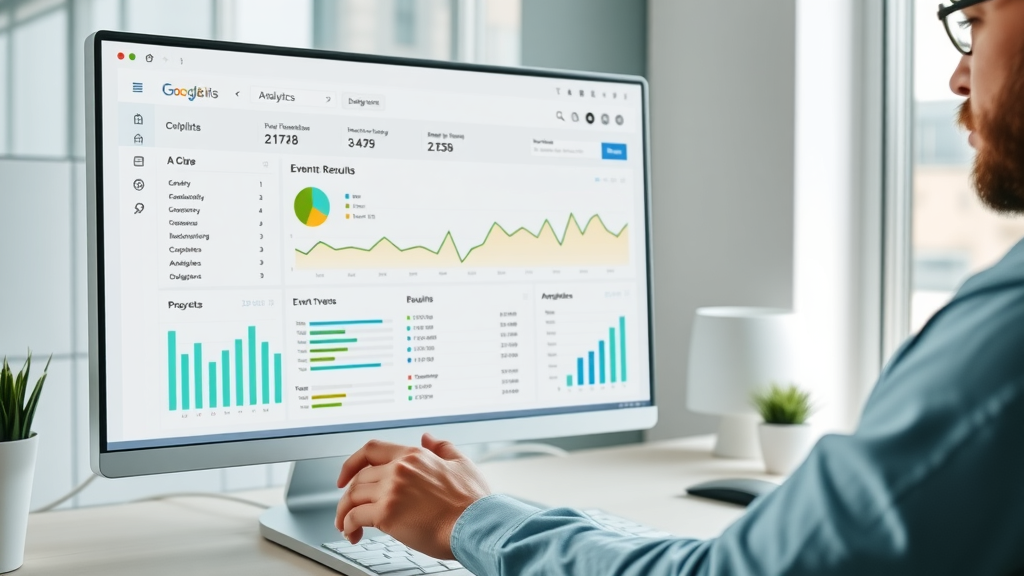Introduction: The Urgency of Mastering Conversion Tracking
- Startling Statistic: Over 60% of marketers admit to not having full confidence in their conversion tracking systems.

- Why Immediate Action Matters: Every day spent without reliable conversion tracking means wasted ad budgets, missed opportunities, and an incomplete understanding of what’s driving your business results. Quick action isn’t optional—it’s a necessity.
Are you pouring money into advertising but still unsure what’s really working? You’re not alone. Even professional marketers are often left in the dark by unreliable or incomplete conversion tracking. In this comprehensive guide, you’ll learn exactly how to set up conversion tracking, use advanced strategies, and bring confidence to your campaign results—starting today.
What You'll Learn About Conversion Tracking
- The basics and advanced methods of conversion tracking
- How to set up conversion tracking and measure conversions across multiple platforms: Google Ads, Tag Manager, Analytics, and Events Manager
- Understanding event parameter, event parameters, and conversion action
- Key integrations like Google Tag Manager and Events Manager
- Troubleshooting common conversion tracking errors
- Actionable conversion tracking tips to improve your conversion rate
Conversion Tracking: The Foundation of Digital Success
- Conversion Tracking Defined: Conversion tracking is the process of measuring specific customer actions—like purchases, signups, form submissions, or any high-value behavior—on your website or digital properties. It’s the backbone of any data-driven marketing strategy. Knowing which ads, keywords, or campaigns lead to a sale or lead is critical for success.
- Why It Matters: Conversion measurement powers smarter, more efficient marketing decisions. With accurate conversion tracking, you find out the true impact of every dollar spent, rather than guessing what’s working.
- Real-World Examples: Businesses that set up conversion tracking correctly often see immediate improvements—higher conversion rates, lower acquisition costs, and targeted growth strategies. For example, an e-commerce store using robust tracking saw a 27% increase in ROAS within two months by cutting spend on underperforming ads and boosting top-performers.

The best way to harness the power of your marketing is to invest in precise conversion tracking from the start. Without it, you’re taking shots in the dark—and your competition will quickly outpace you.
How to Set Up Conversion Tracking: Step-By-Step Guide
Essential Elements: Event Parameter, Event Parameters, and Conversion Action
- Identify Your Conversion Action: Start by deciding what valuable to your business—purchases, email signups, form fills, downloads, or a site visit. Each conversion action should reflect a key customer step.
- Set Event Parameter(s): Use event parameter and event parameters to add detail to every tracked action. For example, track the product ID with a purchase event, or the value of a lead—so you gain granular insights on which marketing touches drive real outcomes.
Each event parameter offers more than just total numbers; it lets you see patterns across different channels, devices, and cohorts. This is the first major step to ensure you’re ready for true conversion measurement and high-accuracy reporting.
Choosing Your Tool: Google Ads, Tag Manager, and Google Analytics
- Tool Differences: Decide whether you’ll use Google Ads direct tracking, Google Tag Manager, or a third-party solution like Events Manager. Google Ads is ideal for ad campaign reporting, Tag Manager enables centralized script control across your site, and Events Manager is essential for platforms like Facebook Conversions API.
- Google Tag Manager Setup: With GTM, you can create a conversion action and deployment across all website pages—without code changes. This makes it the preferred method for agile teams and agencies managing multiple sources of traffic.

Each tool offers unique advantages. Google Tag and Tag Manager streamline updates, while direct Google Ads tracking gives advertisers immediate feedback. Often, the best practice is to combine Tag Manager for sitewide events, Events Manager for cross-platform, and direct integrations for key ad ecosystems.
Setting Up Conversion Measurement in Your Ads Account
- Step-by-Step: To track conversions in your Google Ads account, navigate to Tools & Settings → Measurement → Conversions. Click +New Conversion Action to set up goal types like purchases, signups, or other custom events. Include proper event parameters for each.
- Best Practices: Make sure you’re tracking conversion events across all potential traffic sources—organic, paid, email, and referral. Use unique tags for each source for reliable, de-duplicated reporting across channels.
Once your conversion measurement is in place, confirm that events are firing as intended by using Google Tag Assistant and live testing tools. Accurate tracking conversions from the outset will inform budget allocation and future optimizations.
Advanced Conversion Tracking Tips
- Leverage Conversion Data: Don’t stop at surface-level metrics like total conversions. Dive deep into conversion data—review event parameter breakdowns, map user journeys, and attribute ROAS by campaign, ad group, and creative type.
- Use Custom Event Parameters: By customizing event parameters (e.g., basket value, product SKU, subscription level), you gain richer context for every tracked conversion—allowing for personalized retargeting and dynamic ad strategies.
- Testing and Troubleshooting: Test your setups regularly by simulating conversion actions (test checkouts, form fills, etc.). Review logs to ensure every tag fires and no event parameters are missing.
- Maximize Conversion Rate: Use findings from your conversion data to refine landing pages, duplicate high-performing ads, and pause underperformers—constantly improving your conversion rate.
“If you’re not tracking conversions reliably, you’re simply flying blind.” – Digital Marketing Expert
Continuous improvement separates the best marketers from the rest. Let data—and not guesswork—guide every decision.
Measuring and Analyzing Conversion Data
- Reading Conversion Data: Utilize your ads account, Google Analytics, or reporting dashboards to interpret how users move from click to conversion. Look for trends—such as which sources yield the highest-value conversions or where drop-off occurs.
- Informing Decisions: Strong conversion measurement informs ad spend, creative updates, and marketing focus. For instance, a low conversion rate from a particular source signals a landing page or targeting issue.
- Reporting to Stakeholders: Clearly highlight conversion data trends and ROI impact in stakeholder reports. Visuals (charts, graphs) simplify complex metrics for quick executive understanding.
| Tool | Best Use | Strengths | Limitations |
|---|---|---|---|
| Google Ads | PPC and SEM tracking | Direct integration, fast setup for ad campaigns | Limited to Google ecosystem, less cross-channel visibility |
| Facebook Events Manager | Social campaigns, Facebook/Instagram | Offline + online events, Conversions API, detailed attribution | Setup complexity, limited to Meta platforms |
| Google Tag Manager | Centralized tag control, global websites | Dynamic deployment, multi-platform, easy testing | Initial learning curve, risk of misconfiguration |
Choosing the right tool and combining their strengths ensures comprehensive, actionable conversion data across your entire marketing funnel.
Troubleshooting Common Conversion Tracking Issues
- No Conversions Registering? Double-check if the tags are firing by using preview modes in Google Tag Manager or Tag Assistant. Ensure that trigger rules are specific and not firing prematurely or failing to fire at all.
- Dealing With Tag Firing Errors: Review your site’s code for duplicate or misplaced tags—common sources of misattribution and dropped conversion actions. Use your Tag Manager’s debug tools and always test on a staging site first.
- Validate Event Parameters: Confirm that all event parameters are correctly installed and sending the right data. For complex shops or apps, work closely with your development team to avoid missing details.

-
Common pitfalls and how to avoid them:
- Wrong tag placement: Always follow official documentation for placing your tags just before the closing </head> or </body> tag.
- Omitted event parameters: Review your full set of desired event parameters and cross-reference with tag firing reports.
- Multiple or duplicated tags: Only install each tracking tag once per page to avoid reading errors or false positives.
- Platform mismatches: Event parameters and actions must be coordinated across Google Ads, Facebook Events Manager, and Analytics to avoid double-counting conversions.
Conversion Tracking Integrations: Best Practices
- CRM & Analytics Integrations: Link conversion tracking with CRM to connect online actions to offline sales and lifetime value. Third-party analytics help tie complex attribution models together for deep funnel insights.
- Cross-Device & Platform Measurement: Today’s buyer journeys span phones, desktops, and even offline interactions. Use advanced tagging (like the Facebook/Meta Conversions API) and Events Manager to catch conversions wherever they happen.
- Offline Conversions: Platforms like Events Manager and using Google Tag’s offline conversion upload ensure you don’t miss sales occurring in stores, on the phone, or through other touchpoints.
“Every dollar not tracked is a dollar potentially lost to inefficiency.” – Industry Leader
The stronger your integrations, the more precise your marketing ROI—and the more confidently you can invest in new channels.
Conversion Tracking Case Studies: Real Improvements
- Increased ROAS with Google Ads: After a full set up conversion tracking overhaul, a SaaS company identified wasted spend in certain ad groups. By reallocating budget to high-conversion rate campaigns, they achieved a 40% improvement in ROAS and reduced CPA in just six weeks.
- Onboarding Optimization: A financial services provider used detailed event parameters to map user progress during onboarding. They identified a critical step where most users dropped off, adjusted their site flow, and increased completed signups by 23%.

Real-world wins are possible with the right tracking foundation—letting you scale faster and invest smarter.
People Also Ask: Top Conversion Tracking Questions Answered
When should I use conversion tracking?
- Start using conversion tracking the moment you launch any advertising campaign. Capturing every customer action and conversion data as early as possible ensures that you can optimize your ads, track conversions, and build upon a complete dataset from day one. This is true for all platforms—Google Ads, Facebook, and even email campaigns. Early tracking enables powerful trend analysis and the ability to react quickly to changes.
Is Google conversion tracking free?
- Yes, the core Google conversion tracking features are free as part of every Google Ads and Google Analytics account. Advanced add-ons (offline upload, integrations, etc.) might have costs, but anyone running digital campaigns can set up conversion tracking for free and benefit from detailed conversion measurement right away.
How to see Google conversion tracking?
- To view your conversion tracking data, open your Google Ads account or Google Analytics dashboard. Navigate to the “Conversions” or “Events” tab to review conversion data, event parameters, and measure the effectiveness of your marketing campaigns with powerful visualizations and tables.
Does Google Analytics do conversion tracking?
- Absolutely! Google Analytics (especially GA4) is built for robust conversion tracking. It allows you to set goals, map ecommerce actions, track custom events, and analyze conversion rates and user journeys in detail—all within an easy-to-use, centralized reporting interface. It supports tracking conversions across websites, apps, and even offline channels when connected with other tools.

Frequently Asked Questions about Conversion Tracking
-
What’s the difference between conversion action and conversion event?
A conversion action is a business-defined outcome you want to track—like a purchase or signup. A conversion event is the technical “trigger” (click, pageview, etc.) recorded by your analytics platform. Typically, each conversion action is tied to one or more conversion events. -
Can I track multiple conversions on the same page?
Yes! Use multiple tags or event parameters in your setup so you can capture every distinct action—such as both a newsletter signup and a purchase event. Test thoroughly to avoid duplication or missed data. -
How does conversion tracking impact reporting accuracy?
Reliable conversion tracking enables precise ROI calculations and campaign optimization. Without it, you risk misattributed sales, missed revenue, or wasted ad spend. Accurate reporting stems from clear event parameters and correct tag installation.
Key Takeaways: Unlocking the Power of Conversion Tracking
- A solid conversion tracking setup is non-negotiable for digital marketing success
- Regular auditing and optimization of event parameters and conversion actions increase ROI
- Combining tools—Google Ads, Tag Manager, Events Manager—maximizes data accuracy
- Conversion tracking data unlocks higher conversion rates and shapes marketing decisions for growth
Conclusion: Take Action with Conversion Tracking—Don’t Wait
- Implementing robust conversion tracking today is crucial—wait, and you’ll lose ground to your competitors.
- Act now to improve conversion measurement, conversion rate, and overall ROI.
- For more information read The Ultimate Guide to Paid Advertising: Strategies, Channels, and ROI-Boosting Tips.
- Ready to Grow? Call Digital Media Marketing Today at 586-997-0001
 Add Row
Add Row  Add
Add 




Write A Comment